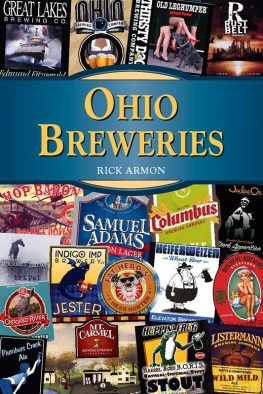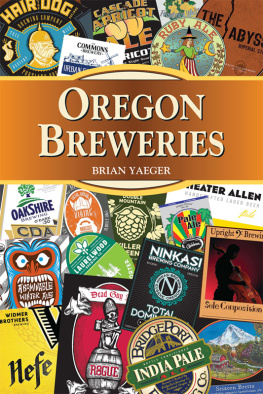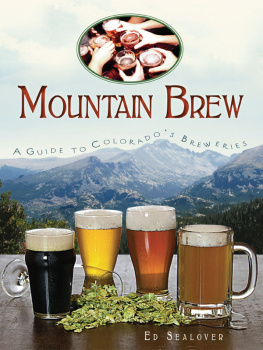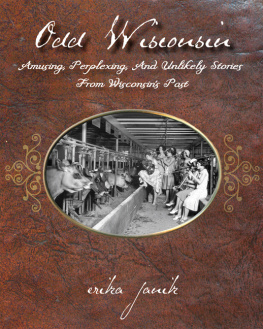
Places along the Way
Richly illustrated with historic and contemporary photos, the Places along the Way series links Wisconsins past with its present, exploring the states history through its architecture.
Fill er Up: The Glory Days of Wisconsin Gas Stations
Jim Draeger and Mark Speltz
photographs by Mark Fay
Encore: The Renaissance of Wisconsin Opera Houses
Brian Leahy Doyle
photographs by Mark Fay
Barns of Wisconsin
Jerry Apps
photographs by Steve Apps
Bottoms Up
A Toast to Wisconsins Historic Bars & Breweries

Jim Draeger & Mark Speltz
photographs by Mark Fay
Wisconsin Historical Society Press
Places along the Way
Published by the Wisconsin Historical Society Press
Publishers since 1855
2012 by the State Historical Society of Wisconsin
E-book edition 2012
Publication of this book was made possible in part by a grant from the Alice E. Smith fellowship fund.
wisconsinhistory.org
For permission to reuse material from Bottoms Up (ISBN 978-0-87020-498-2, e-book ISBN 978-0-87020-601-6), please access www.copyright.com or contact the Copyright Clearance Center, Inc. (CCC), 222 Rosewood Drive, Danvers, MA 01923, 978-750-8400. CCC is a not-for-profit organization that provides licenses and registration for a variety of users.
Unless otherwise indicated, the color photographs in this book were taken by Mark Fay of Faystrom Photo in Eau Claire. These photographs, WHS Accession 2012/006, as well as those identified with WHi or WHS are from the Societys collections; address requests to reproduce these photos to the Visual Materials Archivist at the Wisconsin Historical Society, 816 State Street, Madison, WI 53706. For illustrations not identified with a caption and/or credit on the page where they appear, see page , which constitutes a continuation of this copyright page.
The Library of Congress has cataloged the printed edition as follows:
Draeger, Jim.
Bottoms up: a toast to Wisconsins historic bars and breweries / Jim Draeger, Mark Speltz; photographs by Mark Fay.
p. cm. (Places along the way)
Includes bibliographical references and index.
ISBN 978-0-87020-498-2 (hardcover : alk. paper) 1. Bars (Drinking establishmentsWisconsinHistory. 2. Bars (Drinking establishmentsWisconsinGuidebooks 3. Beer. I. Speltz, Mark. II. Title.
TX950.57.W6D734 2012
647.95775dc23
2012000652
The activity that is the subject of this book has been financed in part with Federal funds from the National Park Service, US Department of the Interior. However, the contents and opinions do not necessarily reflect the views or policies of the Department of the Interior.
This program receives Federal financial assistance for identification and protection of historic properties. Under Title VI of the Civil Rights Act of 1964, Section 504 of the Rehabilitation Act of 1973, and the Age Discrimination Act of 1975, as amended, the US Department of the Interior prohibits discrimination on the basis of race, color, national origin, disability, or age in its federally assisted programs. If you believe you have been discriminated against in any program, activity, or facility as described above, or if you desire further information, please write to: Office of Equal Opportunity, National Park Service, 1849 C Street, N.W., Washington DC 20240.

Writing this book was like brewing a good beer: we shopped for quality ingredients, mixed them in the proper proportions, let the ideas ferment, and finally bottled and capped them when the time was right. Like the hardworking people we celebrate in this book, we could not do our work alone. Jims wife, Cindy, suffered to hear of many unique and unusual taverns visited during research with the promise that she will someday see them. His son, Nick, tolerated stories that sometimes made it into these pages. Marks newborn daughter, Marie Lillian, napped peacefully in the dark below his writing desk while the bulk of the manuscript was written, and his wife, Kari, waited patiently while each bit of bar and brewery history was distilled into a tale worth telling. We dedicate this book to you, our families. Without you the brew might have been finished, but the taste would never have been so sweet.

Preface

Interior view of a long-vanished Schlitz tied house, ca. 1912. Courtesy of Oshkosh Public Museum, P2006.1.34.
L ike many good ideas, this book project started somewhat accidentally. It began with a casual conversation between one of the authors and the editors of the Wisconsin Historical Society Press about what a good book on Wisconsin bars could look like. In an exquisite moment of clarity and good judgment, the editors asked us if we were interested in writing such a book. To say that we jumped at the chance would be an understatement; leapt, vaulted, or even rocketed might be more apt descriptions. Few topics so vividly define Wisconsins culturewhile being so much fun to researchand we were honored to work on this book.
This could have just been a book on bars, but it seemed logical to us that any book on Wisconsin bars should also explore the symbiotic relationship between bars and breweries, since their histories have been so deeply intertwined throughout our history. We also chose to represent, as fully as the space allowed, the full range of brewery and bar types, from the earliest extant properties, like the Wade House taproom in Greenbush, to those more recently completed, such as Brocachs downtown Madison location. We purposefully chose the most intact and unchanged buildings so that readers might travel the state and see firsthand these places where time seems suspended, and appreciate, as we do, the power of a historic space to evoke a deep understanding of the time and events that created it.

This graphic compares the ratio of bars to grocery stores. The concentration of red within the outline of Wisconsin is emblematic of the states strong tavern culture. Courtesy of FloatingSheep.org
To put this book together, we relied on many years of personal travel throughout Wisconsin and the many unique bars encountered along the way. We supplemented that information with dozens of tips from friends, acquaintances, and complete strangers as we began our research and talked with people about our project. We organized these memorable bars and suggested locations on a spreadsheet and hit the road over many weekends, driving as much as a thousand miles in a weekend and visiting as many as twenty-five bars in a day. Our photographer, Mark Fay, logged more than eight thousand miles driving to photograph the final selections. The owners of the hundreds of bars we visited, with only one exception (who shall remain nameless), were uniformly gracious and welcoming, and we regret that we could not find room to include many more deserving taverns within these pages. Their customers were helpful, enthusiastic, and more than willing to share tips of their own favorites, some of which have made their way into this book.
Next page











